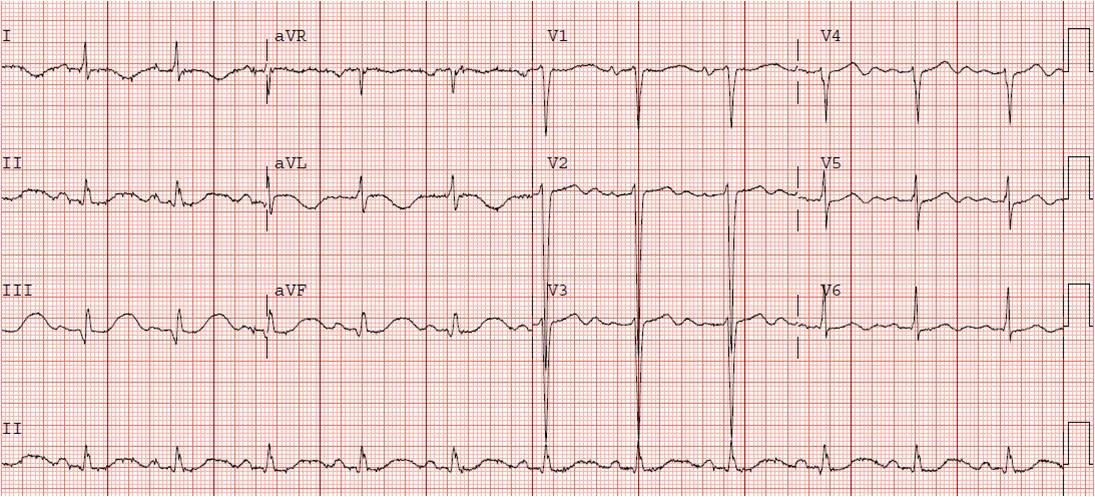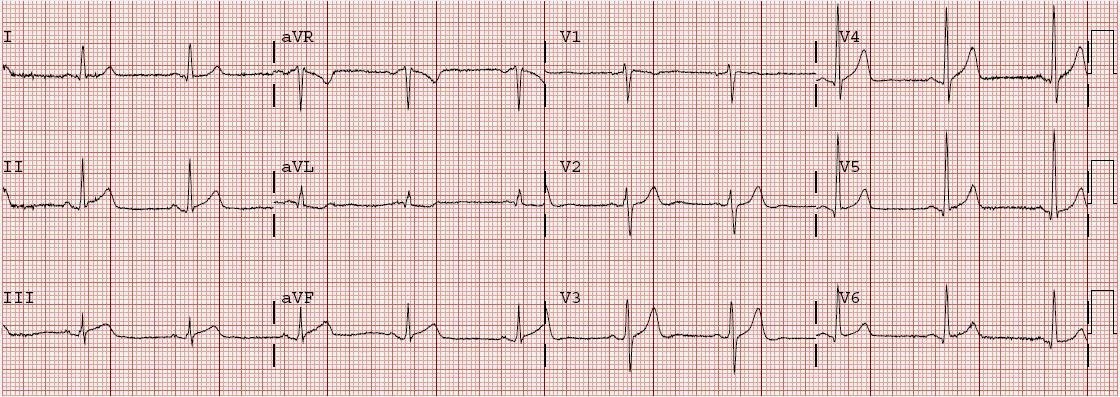The computerized QTc is 472, but the actual QTc is well over 600 ms. The T-waves are almost like a sine wave, and there are very prominent U-waves, best seen in precordial leads. These findings are pathognomonic of hypokalemia, and this was indeed the etiology of the cardiac arrest.
Beware crescendo angina in patient with known CAD
A 73 yo f with hx of CAD (CABG x 2), DM, HTN, hyperlipidemia and known previous LAD occlusion, presented to the ED at t=0 with chest pain,…





Dr. Smith
From this example, it would appear the QTc should be calculated from the end of the U wave, not T. Is that correct? If so, at what point (or amplitude) would you begin considering U waves as the end point for the QTc?
Thank you for sharing your wisdom. New and old, your posts are enlightening.
-Jesse
Good question! The answer is obscure, however. The computer is supposed to take the longest of the QT intervals as the final number. I don't know how it evaluates U-waves. If you look in precordial leads, the QT interval is not terribly long. If you look in limb leads, it is impossible to identify a U-wave: are the T- and U-waves merged? Is there no U-wave? Should the QT only be measured in the precordial leads where the T- and U-waves are distinct? I think these are academic questions; in practice, either the U-waves are very prominent, and this signifies probable hypokalemia, or there is a very long QT, which also signals hypokalemia.